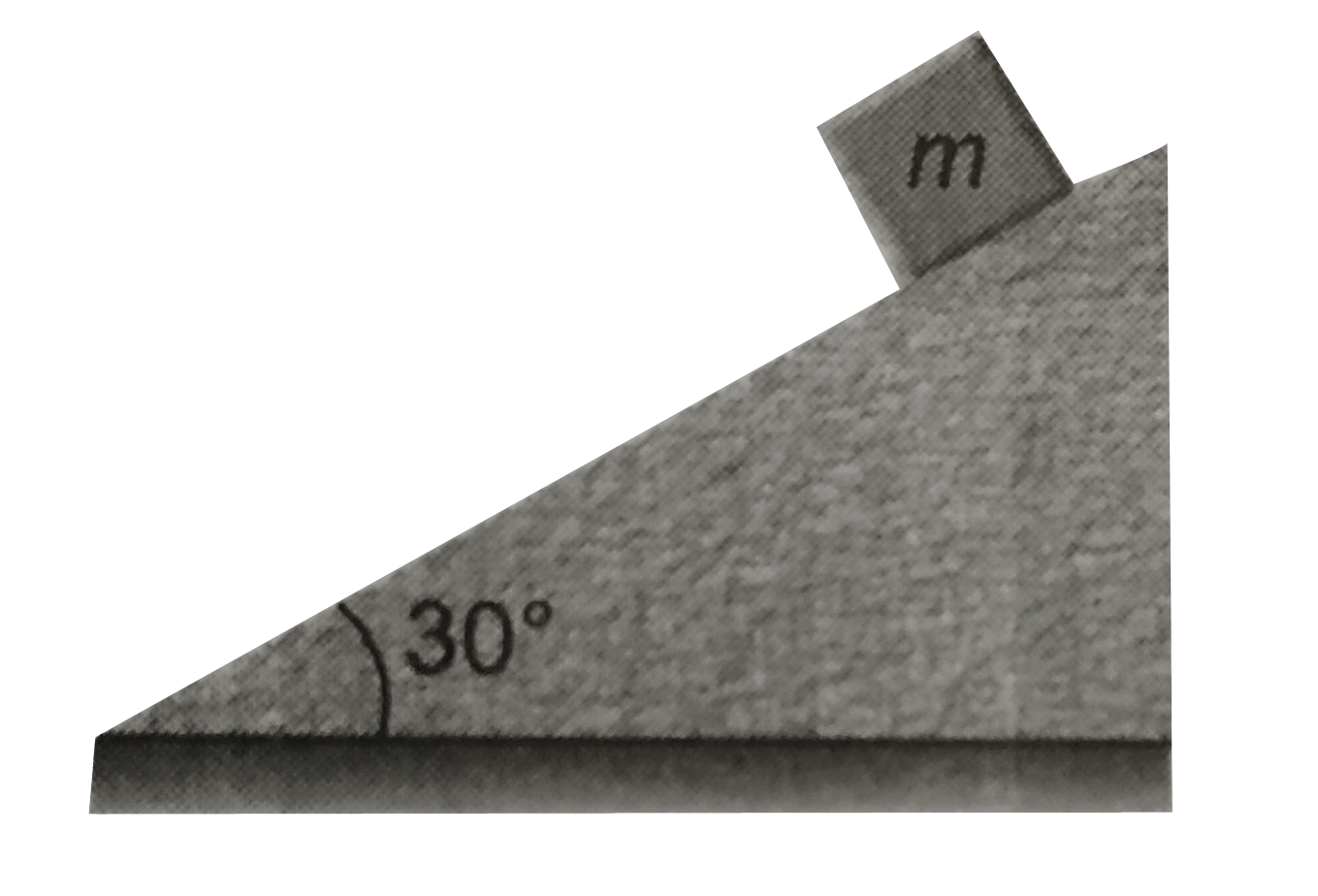In the previous quiestion the minimum force F required so that block A will slip on block B is:
30 N
20 N
10 N
not possible
The correct Answer is:B
To solve the problem of determining the minimum force F required for block A to slip on block B, we can follow these steps:
Step 1: Understand the System
We have two blocks: Block A (10 kg) resting on Block B (20 kg). We need to find the minimum force F that needs to be applied to Block A so that it starts to slip over Block B.
Step 2: Calculate the Normal Force on Block A
The normal force N acting on Block A is equal to its weight since it is resting on Block B.
NA=mA⋅g=10kg⋅10m/s2=100N
Step 3: Calculate the Maximum Static Friction Force between A and B
The maximum static friction force fmax that can act between Block A and Block B is given by:
fmax=μs⋅NA
Where μs is the coefficient of static friction between the two blocks. Given μs=0.2:
fmax=0.2⋅100N=20N
Step 4: Determine the Minimum Force Required
For Block A to start slipping over Block B, the applied force F must exceed the maximum static friction force. Thus, the minimum force F required is:
Fmin=fmax=20N
Conclusion
The minimum force F required for Block A to slip on Block B is 20N.
---
We have two blocks: Block A (10 kg) resting on Block B (20 kg). We need to find the minimum force F that needs to be applied to Block A so that it starts to slip over Block B.
The normal force N acting on Block A is equal to its weight since it is resting on Block B.
The maximum static friction force fmax that can act between Block A and Block B is given by:
For Block A to start slipping over Block B, the applied force F must exceed the maximum static friction force. Thus, the minimum force F required is:
The minimum force F required for Block A to slip on Block B is 20N.
Similar Questions
Minimum force F required to move the block
View SolutionA block of mass m rests on a rough floor . The coefficient of friction between the block and the floor is μ
a. Two boys apply force P at an angle θ to the horizontal. One of them pushes the block , the other one pulls. Which one would reqire less efferts to cause impending motion of the block?
b. What is the minimum force required to move the block by pulling it ?
c. Shown that the block is pushes at a certain angle θ0 it cannot be moved fro whatever the value of P be
View Solution
Knowledge Check
A cubical box of side L rests on a rough horizontal surface with coefficient of friction p. A horizontal force F is a applied on the block as shown in Fig. 15.4.6. If the coefficient of friction is sufficiently high so that the block does not slide before toppling, the minimum force required to topple the block is
 AinfinitesimalBmg/4Cmg/2Dmg (−1μ)
AinfinitesimalBmg/4Cmg/2Dmg (−1μ)
In the shown figure the minimum value of F required to move the block A away from the wall is :

View SolutionIf tan0>μ then minimum force needed to stay block at rest is

View SolutionA block of mass 2 kg is kept on a rough horizontal floor an pulled with a force F. If the coefficient of friction is 0.5. then the minimum force required to move the block is :-

View SolutionMaximum amplitude of SHM so block A will not slip on block B, K=100N/m

View SolutionIn the previous problem. The friction force applied by ground on block B is
View SolutionThe minimum force F for which the block starts moving is Find x

View SolutionA man wants to slide down a block of mass m which is kept on a fixed inclined plane of inclination 30∘ as shown in the figure .Initially the block is not sliding .
To just start sliding the man pushed the block down the inclined with a force F. Now , the block starts accelerating. To move it downwards with conatant speed the man starts pulling the block with same force. Surface are such that ratio of maximum static friction to kinetic friction is 2 Now, answer the following questions.

What minimum force is required to move it up the incline with constant speed?
View Solution